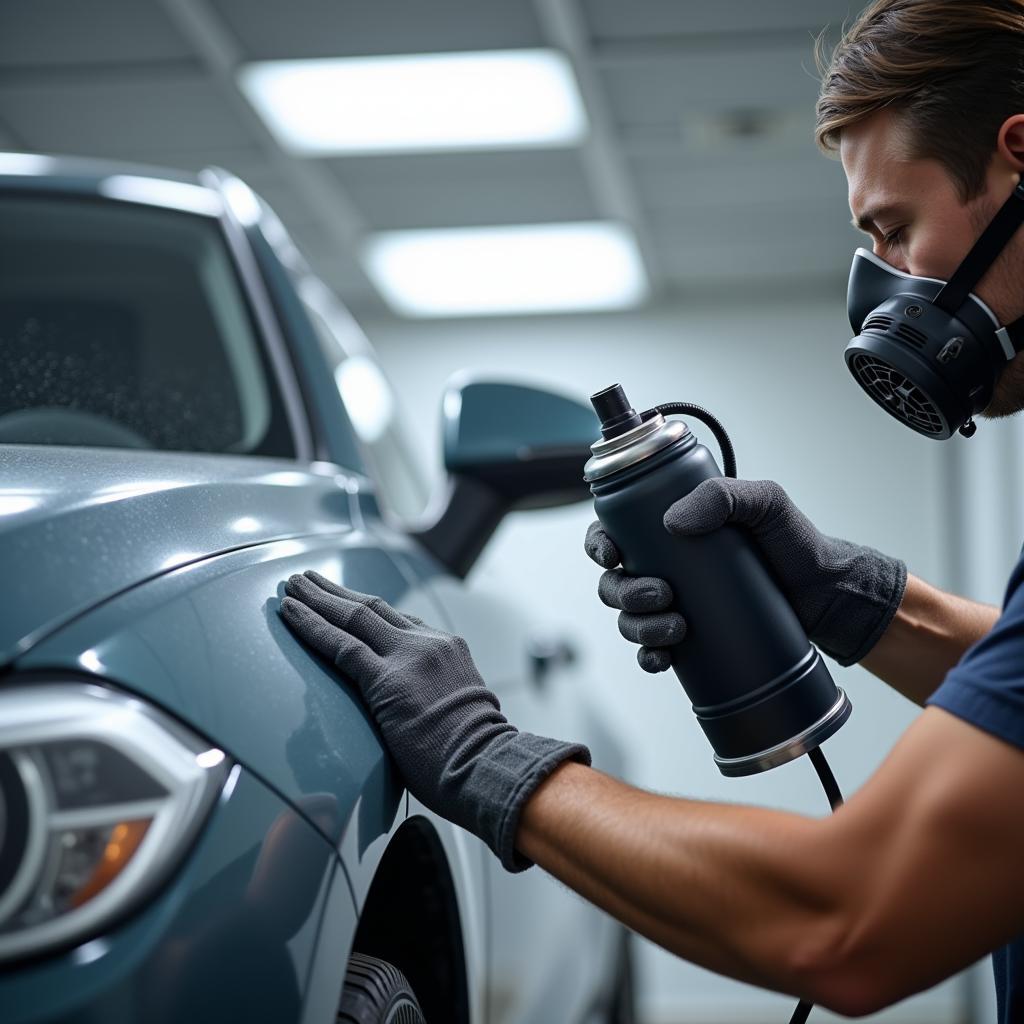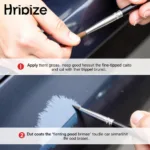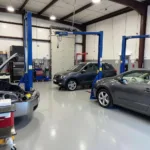Spray paint repair for a car can be a cost-effective solution for minor cosmetic damage, offering a DIY approach or a professional finish. Whether you’re dealing with scratches, chips, or larger areas of damage, understanding the process, tools, and techniques involved is crucial for a successful outcome. This guide will provide you with everything you need to know about spray painting your car. We’ll cover everything from preparing the surface to selecting the right paint and achieving a professional-looking finish.
After prepping the car’s surface, applying primer helps ensure proper paint adhesion. paint repair kits for cars can be a convenient option for DIY repairs.
Understanding Spray Paint Car Repair
Spray painting a car isn’t simply a matter of pointing and spraying. It requires careful preparation, the right tools, and a good understanding of the process. Choosing the correct type of paint is crucial for achieving a durable and seamless finish. This section will break down the different aspects of spray paint car repair.
Types of Car Spray Paint
Choosing the right paint is essential. There are several types available, each with its pros and cons:
- Acrylic Lacquer: Quick drying, easy to apply, but less durable.
- Acrylic Enamel: Durable, good gloss, resistant to chipping and fading.
- Urethane: Highly durable, excellent gloss, but requires specialized equipment and expertise.
Tools and Materials
Gathering the necessary tools and materials beforehand will streamline the process:
- Sandpaper (various grits)
- Primer
- Spray paint (matched to your car’s color)
- Clear coat
- Masking tape and paper
- Tack cloth
- Respirator
- Safety glasses
- Gloves
Knowing how long does car paint repair take is crucial for planning your project.
Preparing Your Car for Spray Painting
Proper preparation is key to achieving a professional-looking finish. This involves cleaning, sanding, and priming the damaged area. This section will guide you through the essential steps:
Cleaning the Surface
Thoroughly clean the area to be painted with soap and water, then degrease it with a wax and grease remover. This ensures proper paint adhesion.
Sanding the Damaged Area
Sand the damaged area with progressively finer grits of sandpaper, starting with a coarser grit to remove imperfections and ending with a finer grit to create a smooth surface.
Applying Primer
Apply a thin, even coat of primer to the sanded area. Primer promotes adhesion and helps the paint color appear more vibrant and even.
Spray Painting Your Car
With the preparation complete, it’s time to apply the spray paint. This section will provide you with tips and techniques for achieving a smooth, even finish.
Applying the Base Coat
Apply several thin coats of spray paint, allowing each coat to dry before applying the next. This prevents runs and drips and ensures even coverage.
Applying the Clear Coat
Once the base coat is dry, apply a few thin coats of clear coat to protect the paint and give it a glossy finish.
 Applying Car Spray Paint for a Smooth Finish
Applying Car Spray Paint for a Smooth Finish
Finishing Touches and Aftercare
After the paint has dried, remove the masking tape and paper. Inspect the finished product for any imperfections. This is the final step in the spray paint repair process.
Polishing and Waxing
Once the clear coat is fully cured, you can polish and wax the area to enhance the shine and protect the paint.
If you’re looking for price for car paint repair small dent, you can find valuable resources online. For localized services, consider searching for “car paint chip repair gold coast” car paint chip repair gold coast.
Conclusion
Spray paint repair can be a viable solution for restoring your car’s appearance. By following the proper steps and techniques outlined in this guide, you can achieve a professional-looking finish and save money. Remember, patience and attention to detail are key to a successful spray paint repair. Consider a car scratch repair remover pen paint applicator for minor touch-ups.
FAQs
-
How long does spray paint take to dry? Drying time varies depending on the type of paint and environmental conditions, but generally, it takes about 24-48 hours for complete curing.
-
Can I spray paint my car in direct sunlight? No, direct sunlight can cause the paint to dry too quickly and unevenly.
-
What is the best type of spray paint for car repair? Acrylic enamel and urethane paints offer good durability and gloss.
-
How can I prevent runs and drips when spray painting? Apply thin, even coats and allow each coat to dry before applying the next.
-
Do I need to apply a clear coat? Yes, a clear coat protects the paint and gives it a glossy finish.
-
How do I match the paint color to my car? Most auto parts stores can help you find the correct paint code for your car.
-
Can I spray paint over existing paint? Yes, as long as the existing paint is in good condition and you properly prepare the surface.
Common Spray Paint Repair Scenarios
- Minor Scratches and Chips: These can often be addressed with touch-up paint and a clear coat.
- Larger Areas of Damage: May require sanding, priming, and multiple coats of spray paint.
- Faded Paint: Respraying can revitalize the appearance of faded paint.
Further Resources and Questions
For further information, consider researching topics such as “DIY car painting tips” or “choosing the right car paint.”
Need Help?
Contact us via WhatsApp: +1(641)206-8880 or Email: [email protected]. Our customer support team is available 24/7.


